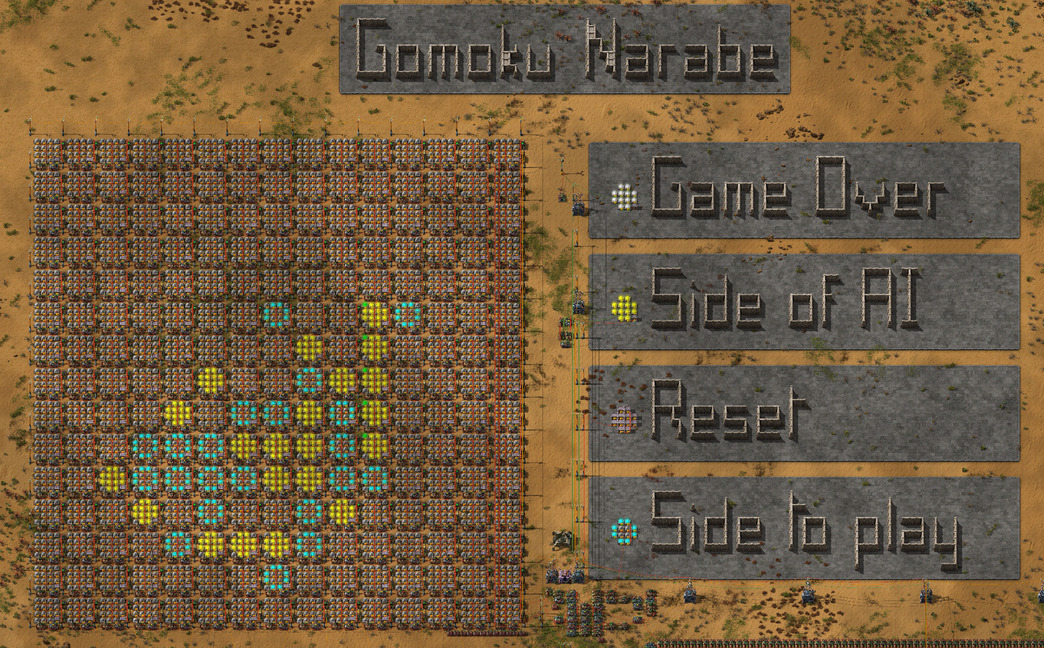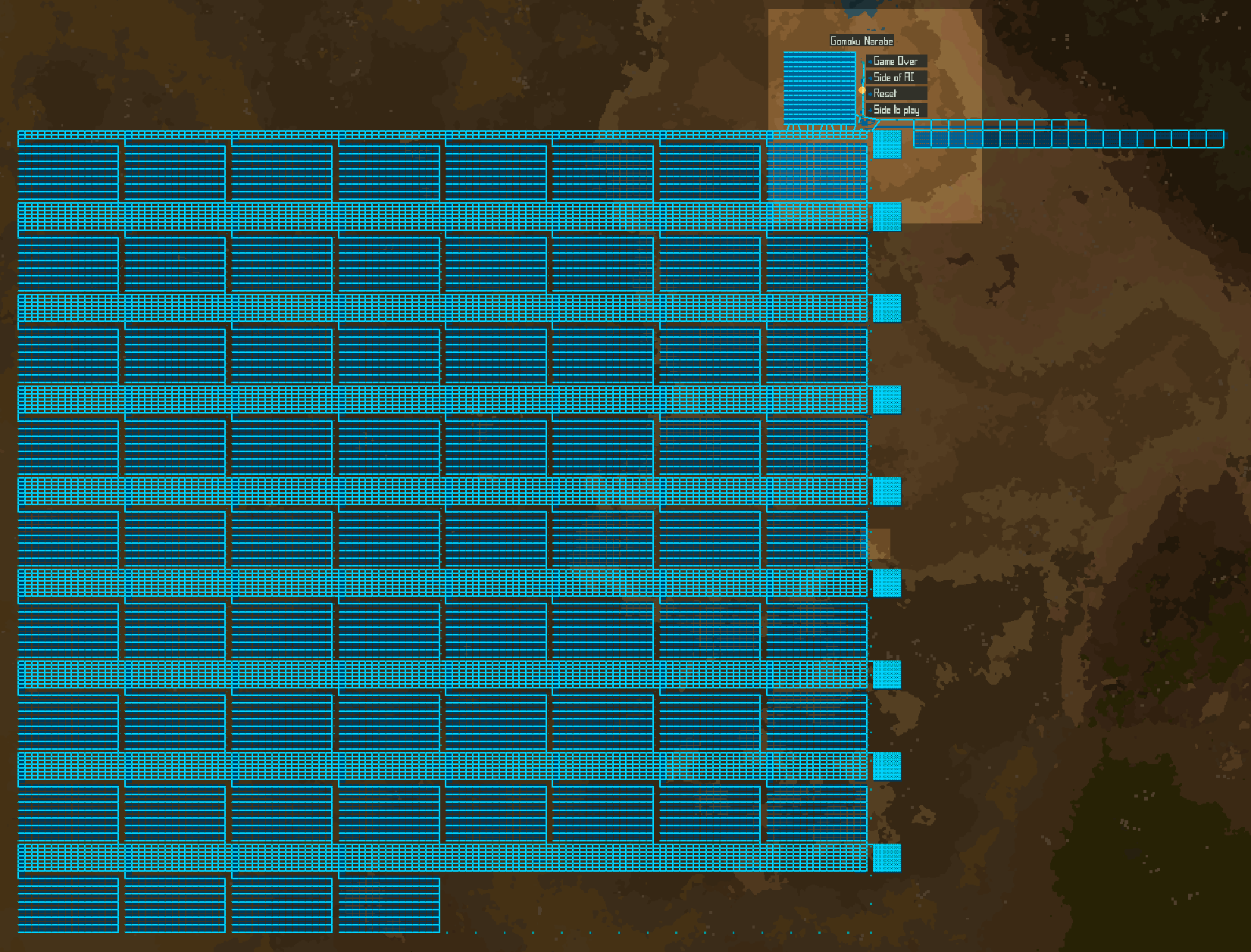I made a game of five-in-a-row (gomoku narabe) with combinators. It includes a small convolutional neural network for the AI Opponent.
Youtube demo: https://www.youtube.com/watch?v=-Ng8E_s6Xgo


blueprint: https://www.kayufu.com/factorio/gomoku_blueprint.txt
savegame: https://www.kayufu.com/factorio/gomoku.zip
This blueprint is 5Mb in size, and pushes the limits of Factorio a little bit. If you wish to paste it into the editor, then make sure to be in zoomed-out map mode. Otherwise Factorio will become unusable. When you paste it, Factorio will freeze for about one minute, but should then continue to run smoothly. Also, you'll have to explore a rather large area beforehand, to accommodate its large size.
The AI is strong enough to be fun and challenging for a beginner like me. It could be made much stronger with a larger network, but it would hurt FPS. On my machine, this blueprint runs a bit more than 50 FPS, but cannot reach 60 FPS. Optimization tips are welcome.
I thought I could also create a similar system for games such as Othello or Go. I chose gomoku, because the rules of the game are easy to wire into combinators. If anybody can build the rules of Othello or Go with combinators, then I'd be glad to provide a small convnet for AI.
Questions and feedback are welcome.
Rémi


